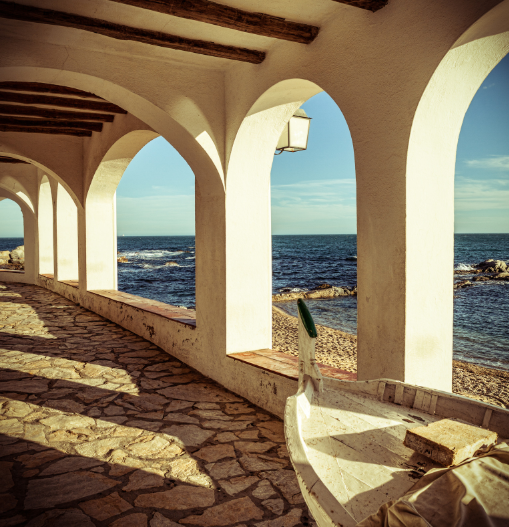
Discover the Best Walking Tours in Costa Brava: A Guide to Exploring the Scenic Coastline
Introduction
Costa Brava, located in the northeast of Spain, is renowned for its stunning coastline, charming villages, and rich cultural heritage. This region offers some of the best walking tours for those who love to explore scenic landscapes on foot. Whether you are an experienced hiker or a casual walker, Costa Brava has something to offer for everyone. In this guide, we will explore the top walking routes, tips for planning your tour, and highlights that you won’t want to miss.
Why Choose Costa Brava for Walking Tours?
Costa Brava’s diverse landscapes, from rugged coastal cliffs to serene inland valleys, provide a unique backdrop for walking tours. The region’s well-maintained trails and pathways allow walkers to experience the natural beauty and cultural richness of Catalonia. Additionally, the mild Mediterranean climate makes it an ideal destination for walking tours year-round.
Top Walking Routes in Costa Brava
Camí de Ronda
The Camí de Ronda is one of the most popular walking routes in Costa Brava. This historic trail runs along the coastline, offering breathtaking views of the Mediterranean Sea and access to hidden coves and beaches.
Highlights of Camí de Ronda
The trail from Sant Feliu de Guíxols to Begur is particularly scenic, passing through picturesque towns like Palamós and Calella de Palafrugell. Along the way, walkers can enjoy pristine beaches, rugged cliffs, and charming fishing villages.
Tips for Hiking Camí de Ronda
- Best Time to Hike: Spring and autumn are the best seasons to hike the Camí de Ronda, with pleasant temperatures and fewer tourists.
- What to Bring: Comfortable walking shoes, a hat, sunscreen, and plenty of water are essential for a safe and enjoyable hike.
Coastal Walks from Roses to Cadaqués
This route takes walkers from the town of Roses, through the stunning Cap de Creus Natural Park, and ends in the charming coastal town of Cadaqués, known for its white-washed buildings and artistic heritage.
Scenic Points along the Route
- Cap de Creus Natural Park: This protected area is home to unique rock formations, secluded coves, and a variety of wildlife.
- Cadaqués: A favorite of artists like Salvador Dalí, Cadaqués offers a mix of cultural and natural attractions.
Best Time to Visit
Late spring to early autumn is ideal for this walk, providing warm weather and clear skies for the best views.
Medieval Villages and Vineyards
This route combines the beauty of the Costa Brava’s coastline with the charm of its inland medieval villages and vineyards.
Exploring Pals, Peratallada, and Begur
- Pals: Known for its well-preserved medieval architecture, Pals offers narrow cobblestone streets and panoramic views.
- Peratallada: This small village is a gem of medieval architecture, with its castle and stone houses.
- Begur: Famous for its castle and stunning views over the Mediterranean, Begur is a must-visit.
Wine Tasting Experiences
The region of Empordà is famous for its wines. Many walking tours include visits to local vineyards where you can sample some of the finest wines in Catalonia.
Benefits of Guided Tours
Opting for a guided tour in Costa Brava has several advantages. Experienced guides can provide valuable insights into the region’s history, culture, and natural environment. They can also navigate the trails more efficiently, ensuring that you don’t miss any hidden gems. Additionally, guided tours often include logistics like transportation and meals, making the experience more convenient and stress-free.
Advantages of Self-Guided Tours
Self-guided tours offer greater flexibility and the freedom to explore at your own pace. You can spend more time at places that interest you and adjust your itinerary as you go. This option is ideal for independent travelers who prefer to create their own adventure. Detailed maps and route notes are usually provided, making it easy to navigate the trails without a guide.
Planning Your Walking Tour
Accommodation Options
Whether you prefer luxury or budget-friendly accommodations, Costa Brava has a wide range of options to suit every traveler’s needs.
Luxury Hotels
For those seeking a more upscale experience, the region offers several luxury hotels and boutique stays. Properties like Mas de Torrent Hotel & Spa in Empordà provide five-star amenities, including gourmet dining and wellness facilities, ensuring a comfortable and indulgent stay.
Budget-Friendly Stays
If you are traveling on a budget, there are plenty of charming guesthouses and B&Bs that offer cozy accommodations at more affordable rates. These options often provide a more intimate experience and a chance to connect with local hosts.
What to Pack for Your Walk
Packing the right gear is crucial for a successful walking tour. Here are some essentials:
- Footwear: Comfortable, sturdy walking shoes or boots are a must.
- Clothing: Lightweight, breathable layers that can be adjusted to changing weather conditions.
- Accessories: A hat, sunglasses, and sunscreen for sun protection.
- Equipment: A backpack, water bottles, and a map or GPS device.
- Extras: Snacks, a first aid kit, and a camera to capture the beautiful scenery.
Safety Tips for Hikers
To ensure a safe and enjoyable hike, keep the following tips in mind:
- Stay Hydrated: Drink plenty of water, especially in warm weather.
- Know Your Limits: Choose trails that match your fitness level and experience.
- Be Weather-Wise: Check the weather forecast before heading out and be prepared for sudden changes.
- Stay on Marked Trails: Follow marked paths to avoid getting lost and to minimize environmental impact.
- Inform Others: Let someone know your plans and expected return time.
Cultural and Natural Highlights
Historical Sites to Visit
Castelló d’Empúries
This medieval village is home to the impressive Basílica de Santa Maria, a landmark visible from afar. The town’s historical significance and well-preserved architecture make it a fascinating stop on any walking tour.
Monestir de Sant Pere de Rodes
Situated in the Cap de Creus Natural Park, this former Benedictine monastery offers stunning views over the surrounding landscape. It’s one of the most important monasteries in Spain and a highlight for history enthusiasts.
Natural Parks and Reserves
Cap de Creus Natural Park
Located at the easternmost point of the Iberian Peninsula, this park features dramatic cliffs, hidden coves, and unique geological formations. It’s a haven for hikers and nature lovers.
Aiguamolls de l’Empordà
This wetland area is a birdwatcher’s paradise, with numerous species to spot throughout the year. The park’s diverse ecosystems make it an excellent destination for those interested in wildlife and conservation.
FAQs
What is the best time of year for walking tours in Costa Brava?
The best time for walking tours in Costa Brava is during the spring (April to June) and autumn (September to October) when the weather is mild and the trails are less crowded.
Are there family-friendly walking routes?
Yes, there are several family-friendly routes in Costa Brava. The paths around Calella de Palafrugell and Tamariu are particularly suitable for families with children.
How can I book a guided walking tour?
Guided walking tours can be booked through various tour operators and websites. It’s recommended to book in advance, especially during peak travel seasons.
What should I pack for a walking tour in Costa Brava?
Essential items include comfortable walking shoes, lightweight clothing, a hat, sunglasses, sunscreen, a backpack, water bottles, snacks, and a map or GPS device.
Are there any challenging routes for experienced hikers?
Yes, experienced hikers will enjoy the more challenging trails in the Cap de Creus Natural Park and the long-distance routes like the Camí de Ronda, which offers more demanding sections.


